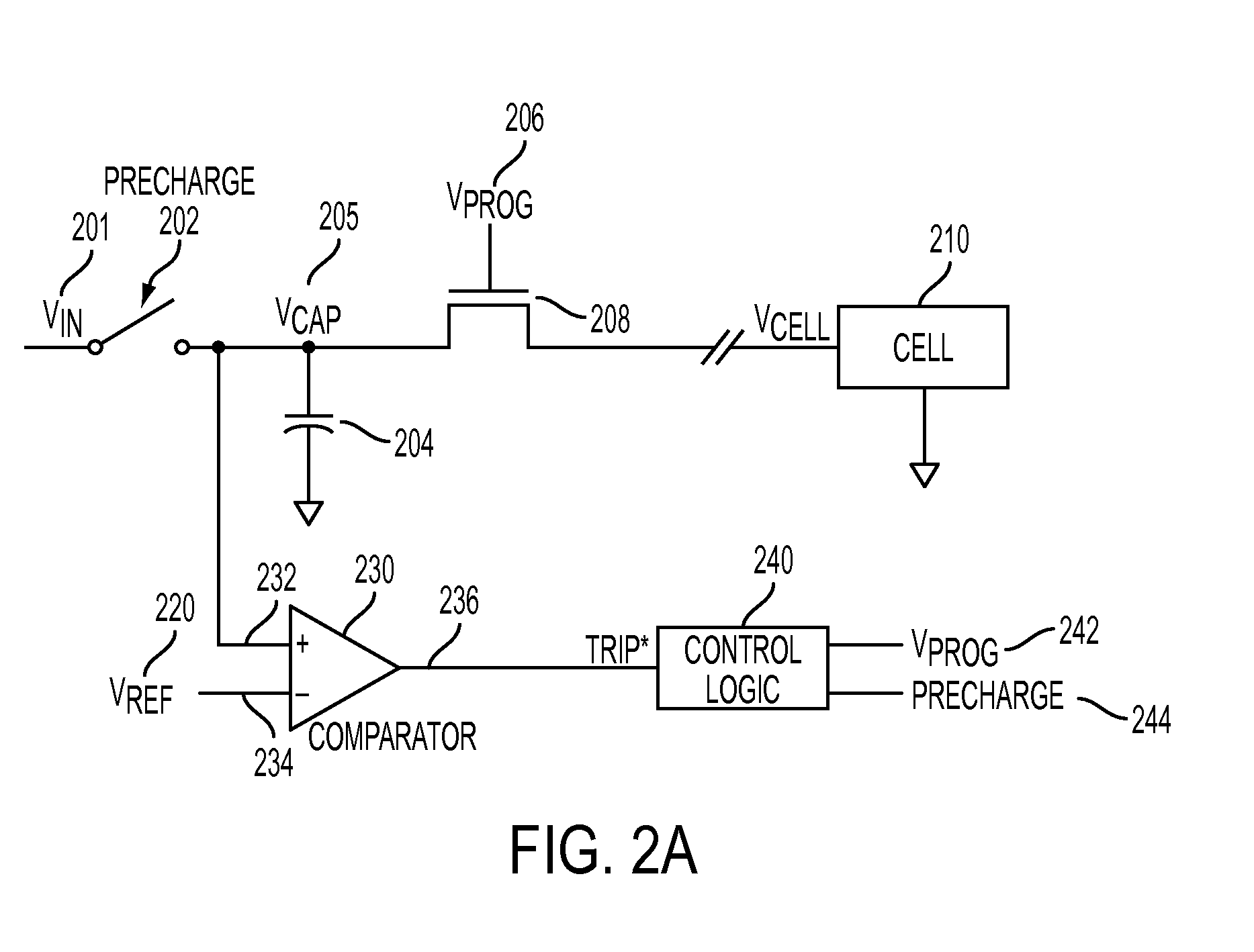Apparatus and methods for forming a memory cell using charge monitoring
a technology of charge monitoring and apparatus, applied in the direction of digital storage, semiconductor/solid-state device testing/measurement, instruments, etc., can solve the problems of excessive power consumption, excessive power consumption, and inability to meet the needs of consumers, and achieve the effect of increasing consumer satisfaction and prolonging the li
- Summary
- Abstract
- Description
- Claims
- Application Information
AI Technical Summary
Benefits of technology
Problems solved by technology
Method used
Image
Examples
Embodiment Construction
[0007]Common forms of non-volatile memories include flash memory, EPROM (erasable programmable read-only memory), EEPROM (electrically-erasable programmable read-only memory), and the like. A relatively new form of non-volatile memory called resistive random-access memory (RRAM) has been developed that uses new technologies to form the memory cells.
[0008]In RRAM, a dielectric is made to conduct through the creation of a filament by applying a relatively high voltage. Materials used to make RRAM include, but are not limited to binary-transition metal-oxide based materials, copper-based materials, and chalcogenides.
[0009]In order to form or program an RRAM memory cell, the memory cell is placed in an on state and a certain voltage is applied for a certain amount of time. Prior methods of forming RRAM memory cells used open loop control, applying a fixed voltage for a set amount of time to each memory cell. Typical voltages range from about 3 to about 5 volts to form the memory cell, a...
PUM
 Login to View More
Login to View More Abstract
Description
Claims
Application Information
 Login to View More
Login to View More - R&D
- Intellectual Property
- Life Sciences
- Materials
- Tech Scout
- Unparalleled Data Quality
- Higher Quality Content
- 60% Fewer Hallucinations
Browse by: Latest US Patents, China's latest patents, Technical Efficacy Thesaurus, Application Domain, Technology Topic, Popular Technical Reports.
© 2025 PatSnap. All rights reserved.Legal|Privacy policy|Modern Slavery Act Transparency Statement|Sitemap|About US| Contact US: help@patsnap.com



